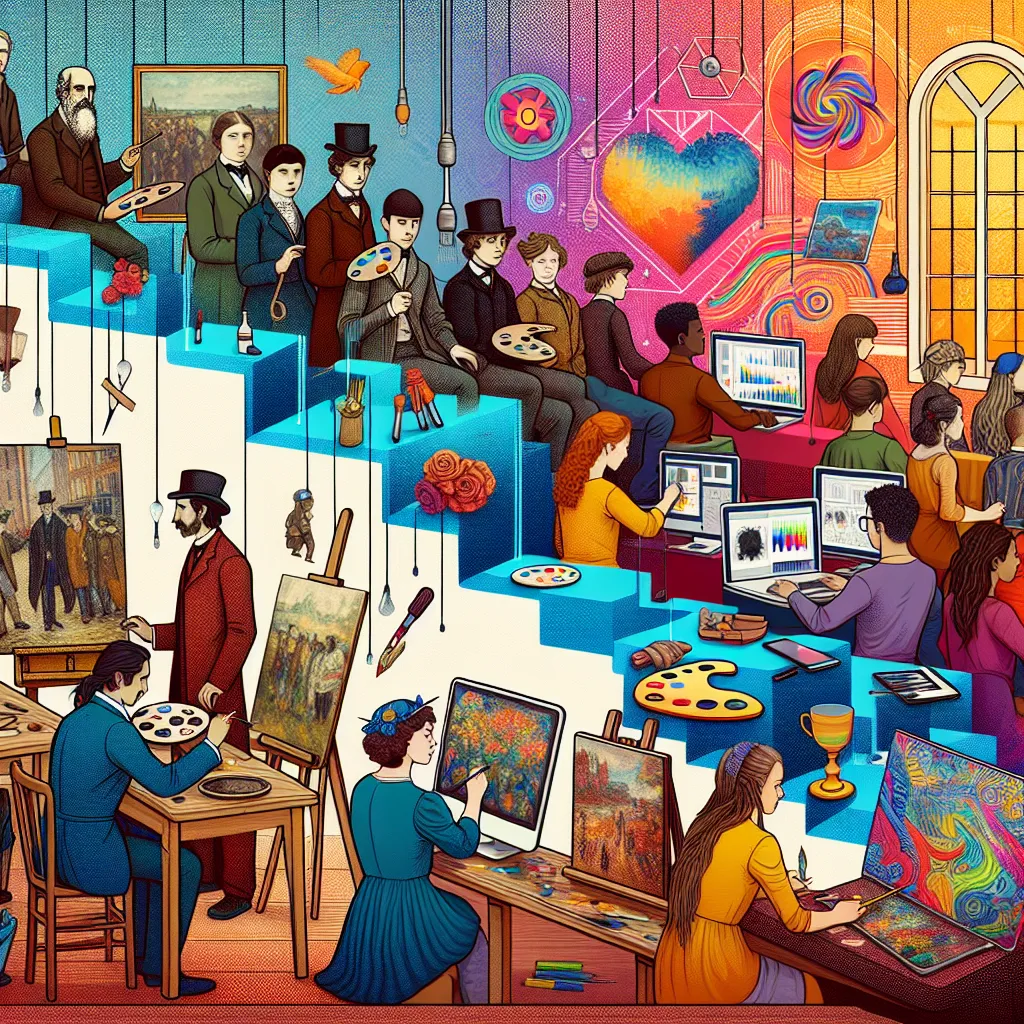New Approaches in Art Education: Revolutionizing Art Schools
New Approaches in Art Education: Revolutionizing Art Schools
Art schools have long been an essential part of nurturing creative talent and providing a structured learning environment for aspiring artists. However, with the ever-evolving nature of the art world and the changing needs of students, there is a growing demand for innovative approaches in art education. This article explores the challenges faced by traditional art schools and highlights new trends and ideas that are revolutionizing the way art schools operate.
The Evolving Role of Art Schools
Art schools have traditionally been known for their focus on technical skills and craftsmanship. Students would spend hours perfecting their drawing and painting techniques, with limited emphasis on conceptual development or critical thinking. While this approach has its merits, it often falls short in preparing artists for the contemporary art world.
In recent years, there has been a shift towards a more holistic approach to art education. Art schools are now placing greater emphasis on encouraging experimentation, fostering creativity, and developing critical thinking skills. This approach acknowledges that art is not just about technical proficiency but also about expressing ideas and engaging with the world around us.
Blending Traditional and Digital Mediums
In today’s digital age, it is crucial for art schools to incorporate technology into their curriculum. Digital art, animation, and graphic design have become vital components of the art world, and artists need to be well-versed in both traditional and digital mediums.
Many art schools are now offering courses that teach students how to utilize digital tools and software alongside traditional art techniques. This integration allows artists to explore new possibilities and push the boundaries of their creativity, opening doors to exciting career opportunities in the digital art industry.
Interdisciplinary Approach
Art does not exist in isolation; it intersects with various disciplines and influences from diverse fields. Recognizing this, some art schools are adopting an interdisciplinary approach to art education. They encourage collaboration with students from other disciplines, such as science, technology, engineering, and mathematics (STEM).

By collaborating with students from different backgrounds, artists gain fresh perspectives and insights that enrich their artistic practice. This approach also prepares them to tackle complex societal issues, as they learn to address contemporary challenges through the lens of art.
Community Engagement and Social Impact
Art schools are increasingly focusing on community engagement and social impact. They are encouraging students to explore art as a means of catalyzing social change and addressing pressing issues in society.
Some art schools have established partnerships with local communities, non-profit organizations, and social enterprises. Through these collaborations, students engage in community-based art projects, public installations, and art activism. This not only provides valuable real-world experiences but also fosters empathy and a sense of social responsibility in budding artists.
Embracing Diversity and Inclusion
Art schools are also recognizing the importance of diversity and inclusion in art education. They are making efforts to create inclusive environments that celebrate artists from different cultural, ethnic, and socio-economic backgrounds.
Some art schools have implemented scholarship programs and mentorship initiatives to support underrepresented artists and provide them with equal opportunities. By embracing diversity, art schools are nurturing a more inclusive art community that reflects the richness and complexity of the world we live in.
Conclusion
Art schools are undergoing a significant transformation to adapt to the evolving needs of artists and the demands of the contemporary art world. By embracing new approaches such as incorporating digital mediums, adopting interdisciplinary practices, promoting community engagement, and embracing diversity, art schools are revolutionizing art education.
These innovative approaches not only equip artists with the necessary skills but also empower them to explore new artistic horizons, challenge societal norms, and make a positive impact through their art. The future of art education lies in these new approaches, where creativity knows no bounds, and art becomes a transformative force in society.
